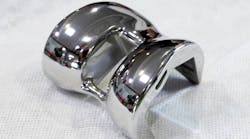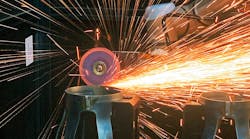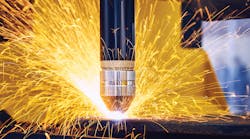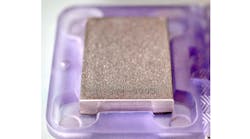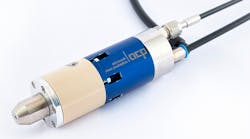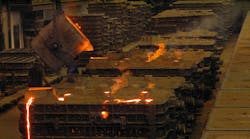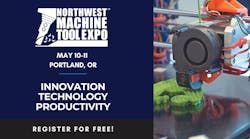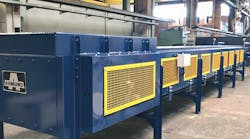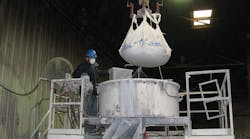When competitors work together to solve a problem, innovation is born. Riverside Refractories and Blastcrete Equipment Co. Inc. found their innovation in a pan mixer. After using Blastcrete’s 2,200-lbs. pan mixer, Riverside Refractories suggested some modifications that would allow both dry blending and precast options. Blastcrete listened, and the results allow refractory producers and foundries to save time, materials, and costs through small-batch mixing.
Riverside Refractories was established more than 80 years ago in Pell City, AL, supplying locally mined clay to the steel and foundry markets as Riverside Clay Co. In 1957, George Morris Sr. and his son John took over the company to produce its Alapatch clay.
Riverside Clay expanded several times over the next 40 years, adding an R&D department, launching a Canadian plant, and diversifying its product line with tap-hole closures, and gunning, ramming, plastic, and castable materials. Those new products and capabilities prompted a name change to Riverside Refractories.
Now Riverside president John Morris Jr. and his three brothers continue the progress, adding precast hearth blocks and a line of Blast Kast shotcrete. In addition to supplying iron and steel industry customers, Riverside provides products for the alloy, foundry, mineral processing, hydrocarbon processing, and power generation industries.
One of Riverside’s competitors was Donoho Refractories, but in 1995 Donoho sold its Blastpatch refractory gunning clay product line to Riverside Refractories. Four years later, when Donoho was sold to Pryor Giggy Refractories, Blastcrete incorporated and became an independent entity. Later, Blastcrete bought and expanded a plant in Anniston, AL, to expand and manufacture its line of refractory shotcrete and gunite machinery.
In 2012, Riverside approached Blastcrete about developing a mixer that could be used for both dry and wet blending in the company’s precast operations. It also wanted a mixer that could process small batches efficiently, as well as batches greater than 2,000 lbs. At the time, Riverside used a non-tilting, flat-mounted mixer that made small batch production difficult, and wasted material and time.
“Riverside needed to dry blend because when they batched their raw materials, they had to bypass their standard, castable mixer, particularly with small batches for their precast plant,” recalled Blastcrete president Jim Farrell. “Changing formulations in refractory mixing requires complete cleanup, which can take up a lot of time. Riverside could avoid that by being able to batch then blend the dry materials, and after that add water in the same mixer.”
Blastcrete’s 2,200-lb. hydraulic pan mixer fit Riverside’s needs. It blends as little as 200 lb. of precast material in its hydrostatic pan mixer, and it offers other benefits too. A bottom-discharge point allows operators to dispense a finished mixture through the bottom into a storage container or another transportation vessel. Adjustable, telescoping legs extend or shorten the pan mixer’s height. Retracting the legs allows the unit to fit under different ceiling heights, while lengthening the legs permits greater access to the discharge point.
The 15-sq.ft. platform provides a spot for the operator to observe the mixing process, and accurately measure volumes of water, using the Fill-Rite water meter. If the mixer needs to be moved, a forklift operator can safely pick it up using the forklift pick-up points on the bottom of the mixer.
During the mixer’s first use, the Riverside operators realized that if the existing 40-hp electric motor’s speed could be increased, they could use the same machine to mix and bag castable material (when required) outside of the precast operation. Based on that insight, Blastcrete modified the design to mix faster and with more torque for dry blending.
McWane Inc.’s Union Foundry Division, also in Anniston, put the first higher-torque mixer into action in 2013. The upgraded mixer is available with a hydraulic or mechanical drive, both of which use an electric motor power source. The mixer also is a component of Blastcrete’s MX-10 mixer and pump.
“The Blastcrete mixer has performed extremely well for us. It’s heavy-duty, fast, strong and safe,” a McWane representative confirmed. “Blastcrete came to our place to train our people, and we could not have asked more from them.”
“One thing we know about Blastcrete is that they listen to their customers, give great service and, as a former competitor, I can say they were tough to compete against,” according to Lee Morris, vice president at Riverside. “We haven’t seen the prototype, but I can tell you, this additional speed will provide more versatility where the mixer could be used in dry blending production or in precast. That brings value to their customers and is a perfect example of how they run their business.”
